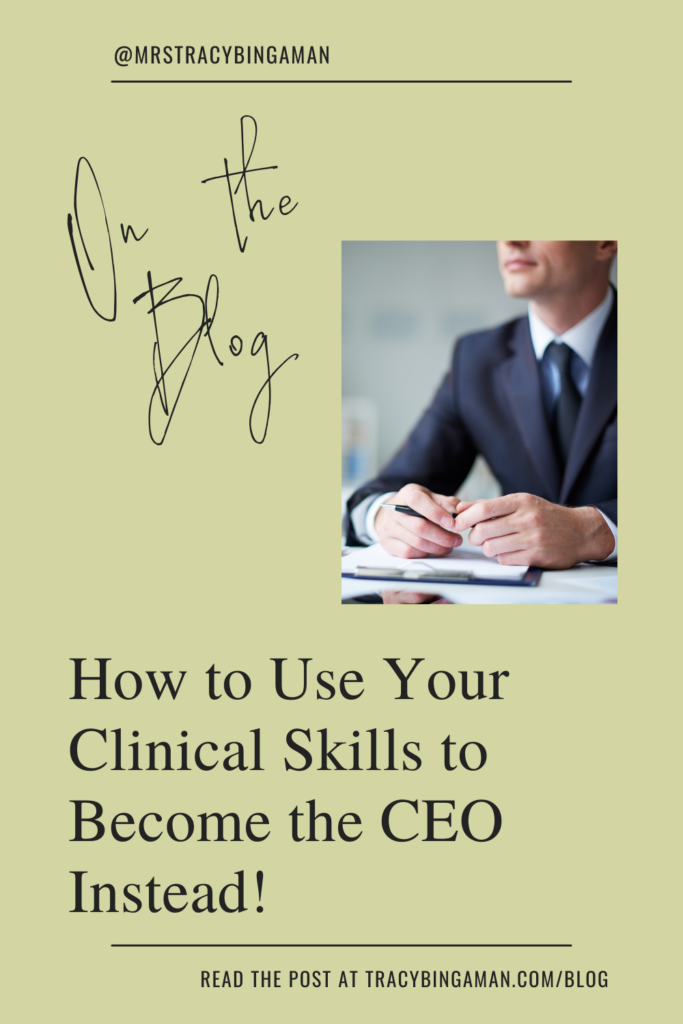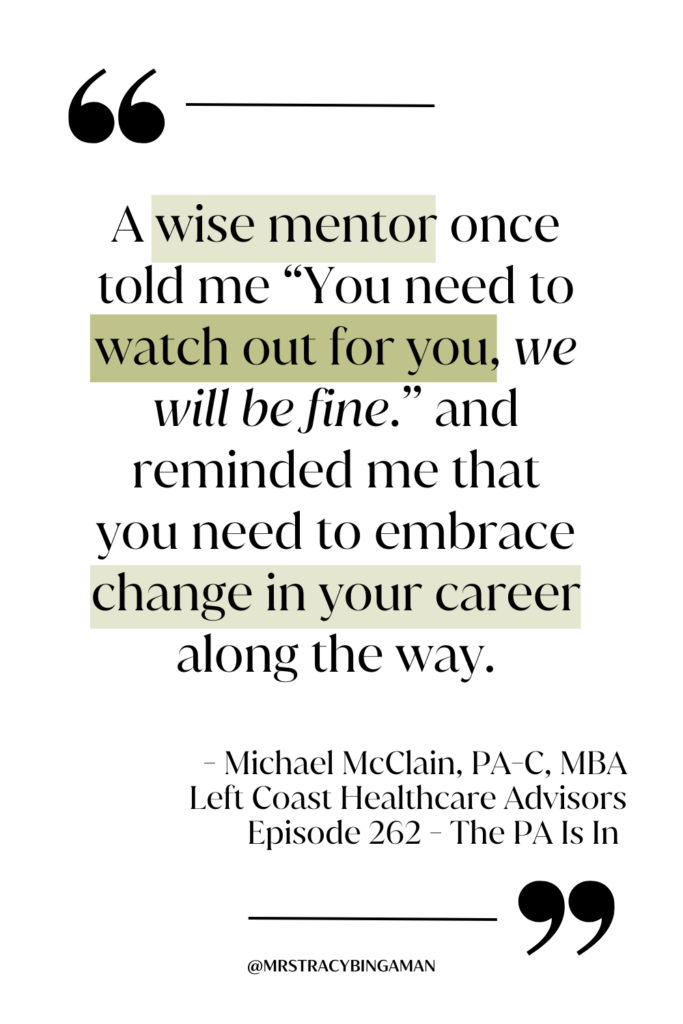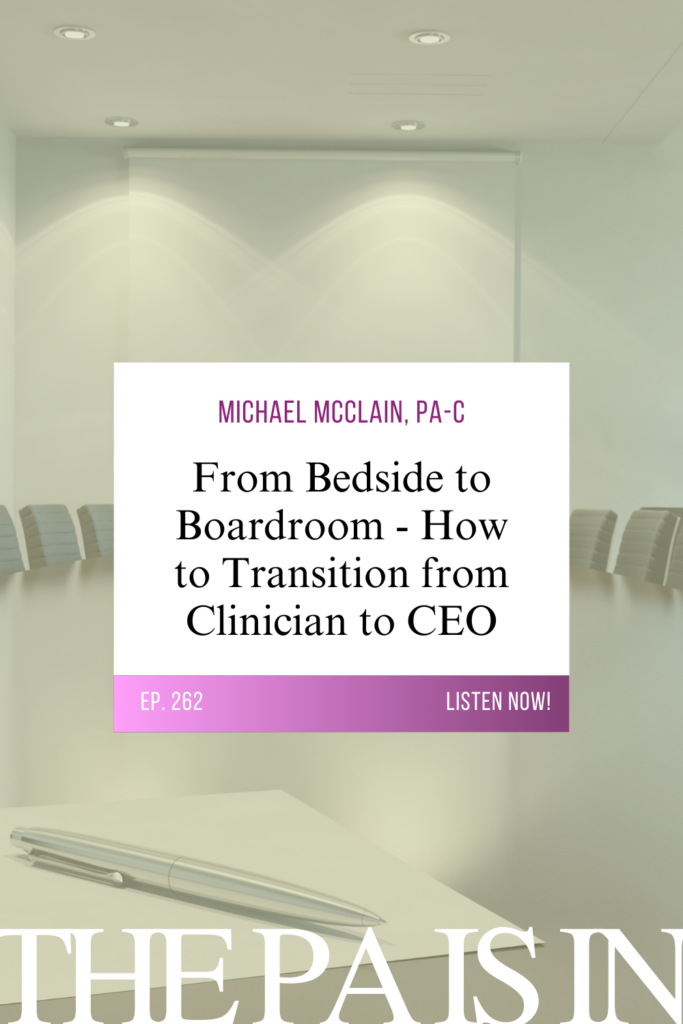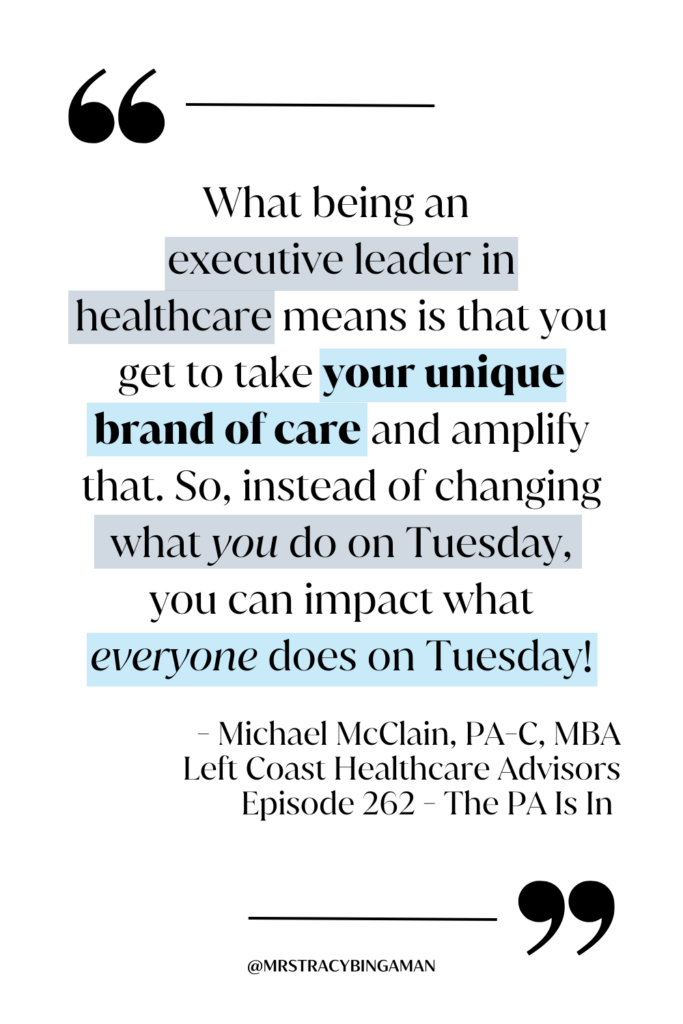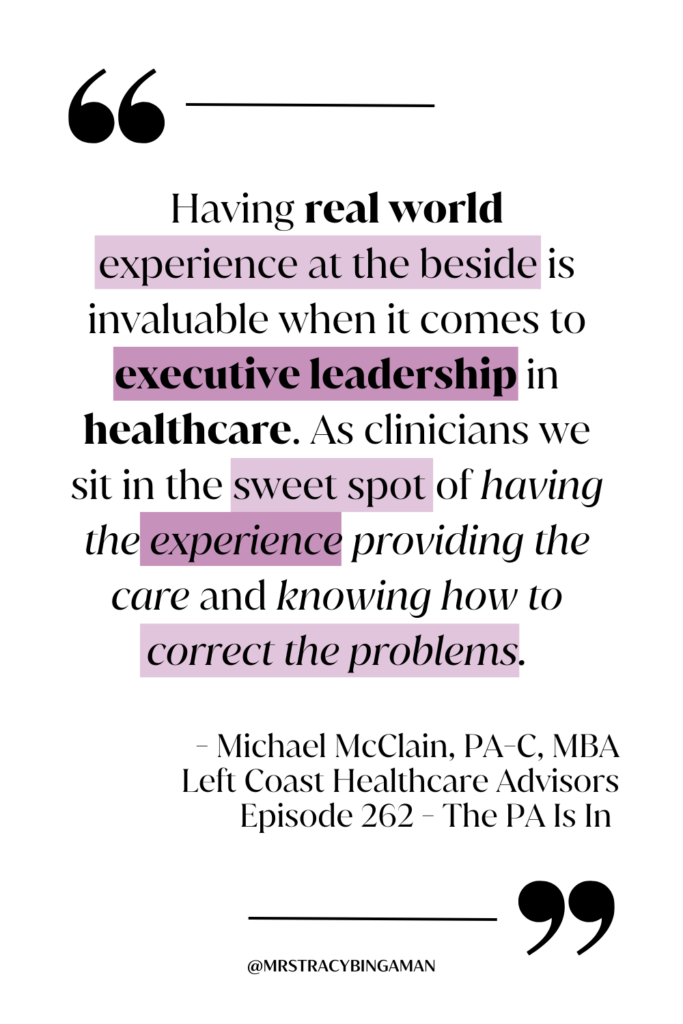Have you ever been interested in an executive role? Have you dreamed of an executive leadership position but never saw a PA in this role before? Are PAs even qualified to join the C suite?
My friend, Michael McClain is here to answer these questions and more on today’s episode! Let Michael serve as your example that PAs really can grow their careers and climb the corporate ladder to serve in healthcare leadership positions. From hospitalist to CEO, Michael shares his career trajectory on this episode of The PA Is In:
Apple Podcasts | Spotify | YouTube
Michael is the Founder and Managing Member for LeftCoast Healthcare Advisors, an ambulatory surgery strategic development, operations, and management firm. A former Hospitalist PA with over 25 years of healthcare experience, Michael has held leadership roles in several large and small healthcare organizations. Most recently, Michael was the Chief Executive for Ambulatory Surgery at Providence, overseeing more than 40 surgical facilities across 7 states.
On Episode 262 of The PA Is In, Michael breaks down the skills and steps needed for PAs to transition from a clinical role to an executive leadership role. If you dream of one day bringing your clinical knowledge and experience to an executive role leading a hospital organization, listen in to Michael’s encouragement and tips on how you can make that dream come true!
From Hospitalist to Healthcare Executive
Starting his career more than 25 years ago, Michael was a clinician, practicing at the bedside working as a hospitalist provider doing internal medicine at a large Level 1 Trauma Center. He worked his way from the clinician wearing the white coat to the clinician on the credentialing committee and eventually moved from the exam room to the board room.
Stepping outside the “traditional track” as a Physician Assistant (now Physician Associate) moves were made and chances were taken. He moved from working at the hospital to specializing in Ambulatory Surgery Centers, making his way up to CEO (Chief Executive Officer) up to the point where he was in charge of 40 outpatient surgery centers in 7 different states!

Opening Doors
Michael attributes his success to a group of colleagues, mentors and advisors who encouraged him to seek opportunities outside the clinical track. An orthopedic surgeon colleague planted the seed that Michael could use his clinical background to apply to the business side of healthcare.
Taking his expertise as a clinician, used to critical thinking, familiar with billing, coding and the operations of being at the bedside and applying that to executive leadership is a great, impressive, incredible non-clinical way to apply those skills.
Mistakes Happen
You won’t always make the best strategic move, take the best job, or do it right the first time. You’re going to take the wrong job, join a committee that doesn’t actually help you reach your goal. The fact that mistakes exist doesn’t mean that you shouldn’t try to move towards the ideal outcome.

Clinical Skills Applied Differently
When we do History and Physical Exam for our patients we are using a specific, honed set of skills. We are approaching a problem, developing a differential diagnosis, solving a problem, creating a plan and executing the plan. These skills apply to clinical and executive leadership as well.
Do not undersell your abilities and get curious about your skillset and how it could apply to leadership and non-traditional, non-clinical positions.
Pin for Later
